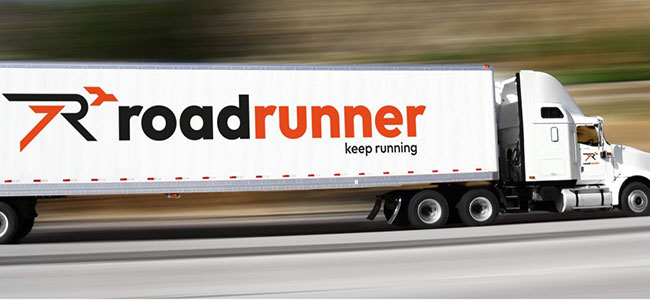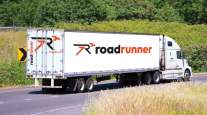Staff Reporter
Roadrunner Raises Pay in Latest Phase of Transformation

[Stay on top of transportation news: Get TTNews in your inbox.]
Roadrunner Freight is increasing driver pay, the latest step in its strategic transformation, the company announced March 14.
The Downers Grove, Ill.-based less-than-truckload and logistics carrier said that 60% of rates along its lanes increased by an average of 12 cents per mile.
Roadrunner executives noted the company is in the midst of a multiyear business transformation targeting growth and refocusing its core operations.

Hurst
“I’m thrilled with the execution of the network changes and the improvements we’re seeing in service and quality,” Roadrunner President Frank Hurst told Transport Topics. “Those network changes were driven to improve the customer experience, and the driver experience as well. Really, the network changes we made were to really get back to our roots.”
The driver pay and incentive upgrades include a bonus of 20 cents per mile for teams, increased network minimum pay by 4 cents per mile, increased deadhead rates by 25 cents per mile plus fuel surcharge and increased fuel discount at preferred fuel partners by 10 cents per gallon.
Roadrunner started the transformation by restructuring the business back down to LTL and logistics operations in August 2019. The goal was to refocus on core competencies and turn around finances. Along the way, the company divested several business segments. In August 2020, leadership began targeting growth in the core business, reconfiguring the network and attracting investments.

Roadrunner started its strategic transformation in August 2019. (Roadrunner Freight)
“We feel we’re creating the best network in the longhaul LTL space today,” Hurst said. “It’s all about building a network where our drivers have less downtime and can increase their settlements on a consistent basis.
“Our linehaul network is very similar to a truckload model. We go direct point to point versus through hubs, which allows less downtime overall.”

Learn about real-world adoption strategies for self-driving trucks with Robert Brown of Spartan Radar and Charlie Jatt of Waymo. Hear a snippet above, and get the full program by going to RoadSigns.TTNews.com.
Hurst noted that with the structural changes, a cultural transformation is underway. Those changes, he said, are specifically centered on taking care of customers and drivers. Here, the pay raise plays a pivotal role. Drivers are coming to Roadrunner, he said, to “maximize earnings and have less downtime going direct to service center to service center.”
Due to the earlier divestitures and downsizing, Roadrunner is not struggling with the same shortages of drivers, equipment and facilities that are vexing much of the transportation sector, he added.
“When we talked last year as we were starting the front end of our network changes, we vacated about 19 markets that reduced our volume by about 30%, which created capacity in every market,” Hurst said. “I like to say that we’re really the best-kept secret in a very turbulent market today. We have capacity for shippers.”
Roadrunner is focused on longhaul, metro-to-metro and direct routes. Its network covers pickup and delivery in 32 markets. The business model centers on linking hard assets to a network of independent contractors.

Korslin
“Where Roadrunner differentiates, particularly in a turbulent market like this, is we have unlimited capacity for direct shippers,” Chief Financial Officer Jack Korslin told TT. “There are very few carriers, if any, that can say that right now. We’re only limited by the amount of independent contractors that we can add to our open system here.
“And so, while many of our peers are turning down customers or rightsizing their book of business, we’re ecstatic to be investing in this unlimited and flexible linehaul network.”
Korslin added that the business model plays particularly well in the current market conditions.
Want more news? Listen to today's daily briefing above or go here for more info
“What we’ve been continually seeing is a lot of people are leaving driving jobs at other companies to become independent contractors,” Scott Ware, senior vice president of operations and linehaul, told TT. “The swarm of people that we’ve seen stepping up to apply and become a part of our company has increased exponentially as well in recent months. We’ve had a continuous flow of candidates come through.”
Roadrunner also has chosen to reinvent its brand as part of the transformation process. That includes adopting a new look and logo. The new logo shows the roadrunner bird to not just reflect the name of the company but also represent being crafty and fast.
Roadrunner Freight ranks No. 75 on the Transport Topics Top 100 list of largest for-hire carriers in North America.



